Quantitative Observation
Quantitative observation is a type of scientific observation that involves the measurement or counting of a particular attribute, characteristic, or variable. This type of observation relies on numerical data and is used to gather information about the quantity or amount of a specific phenomenon.
Examples of Quantitative Observation:
- Measuring the temperature of a substance using a thermometer
- Counting the number of leaves on a plant
- Recording the pH level of a solution using a pH meter
- Weighing the mass of an object using a balance
Steps for Making Quantitative Observations:
- Identify the Phenomenon: Determine the specific attribute or variable you want to measure or count.
- Select the Measurement Tool: Choose the appropriate instrument or tool for making the observation (e.g., ruler, scale, timer).
- Collect Data: Use the selected tool to obtain numerical data related to the phenomenon.
- Record the Observations: Document the quantitative data in a clear and organized manner, typically in a table or chart.
- Analyze the Data: Use mathematical methods to interpret and draw conclusions from the quantitative observations.
Study Guide for Quantitative Observation:
When studying quantitative observation, it is important to understand the following key concepts:
- Accuracy and Precision: The concepts of accuracy (closeness to the true value) and precision (reproducibility of measurements) are essential to quantitative observation. Understand the difference between these two concepts and how they impact the reliability of data.
- Units of Measurement: Familiarize yourself with the common units of measurement used in scientific observations, such as meters, grams, seconds, and degrees Celsius. Practice converting between different units and using the appropriate units for specific measurements.
- Data Analysis: Learn how to calculate averages, make comparisons, and create graphs or charts to represent quantitative data. Understand the significance of trends and patterns in the analyzed data.
- Experimental Design: Explore how quantitative observations are integrated into the design and execution of scientific experiments. Understand the role of controlled variables, independent variables, and dependent variables in making quantitative measurements.
By mastering the concepts and skills related to quantitative observation, you will be able to conduct rigorous scientific investigations and draw meaningful conclusions based on numerical evidence.
.◂Science Worksheets and Study Guides Fifth Grade. Science worksheets: Solids, liquids and gases.
Study Guide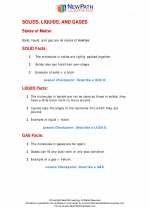 Solids, liquids and gases
Solids, liquids and gases  Worksheet/Answer key
Worksheet/Answer key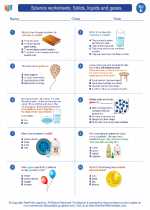 Solids, liquids and gases
Solids, liquids and gases  Worksheet/Answer key
Worksheet/Answer key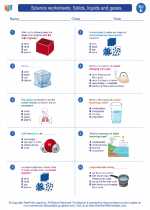 Solids, liquids and gases
Solids, liquids and gases  Worksheet/Answer key
Worksheet/Answer key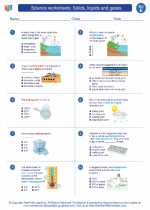 Solids, liquids and gases
Solids, liquids and gases  Vocabulary/Answer key
Vocabulary/Answer key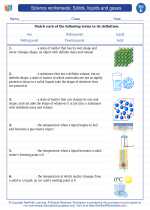 Solids, liquids and gases
Solids, liquids and gases 

 Worksheet/Answer key
Worksheet/Answer key
 Worksheet/Answer key
Worksheet/Answer key
 Worksheet/Answer key
Worksheet/Answer key
 Vocabulary/Answer key
Vocabulary/Answer key

The resources above cover the following skills:
PHYSICAL SCIENCE (NGSS)
Matter and Its Interactions
Students who demonstrate understanding can:
Make observations and measurements to identify materials based on their properties.